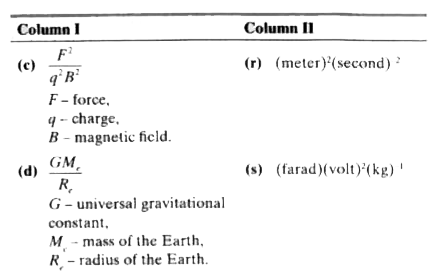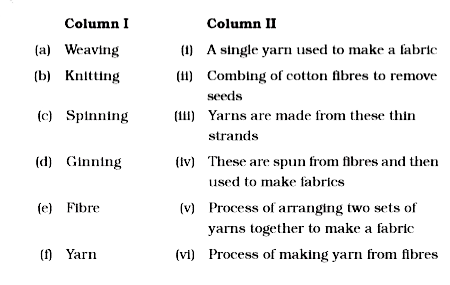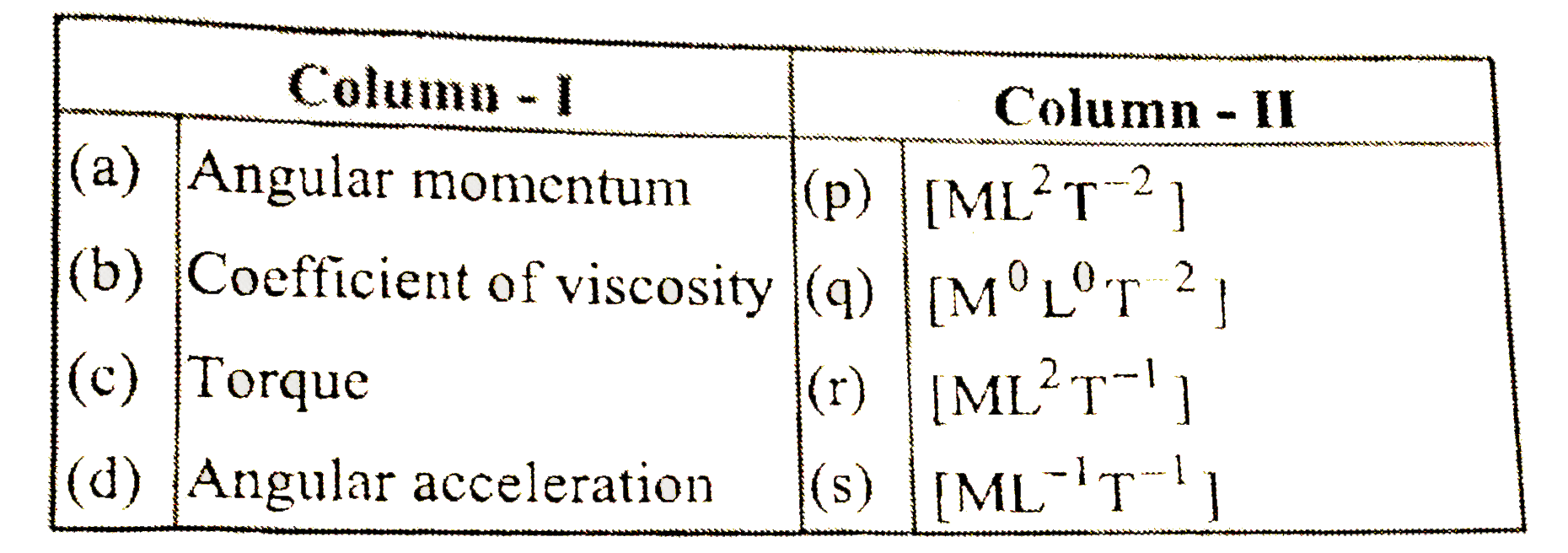In each situation of Column I, a physical quantity related to orbiting electron in hydrogen -like atom is given.
The terms 'Z' and 'n' given in Column II have usual meaning in Bohr's theory. Match the quantities in Column I with the terms they depend on it Column II.
 .
.
a-p,s , b-q,s , c-q,s , d-q,s
a-q,s , b-p,r , d-q,r , c-q,s
a-q,r , b-q,s , c-q,s , a-p,r
a-p,r , b-q,r , c-q,s , d-q,s
The correct Answer is:A
Topper's Solved these Questions
- ATOMS Book:NARAYNAChapter:ATOMS Exercise:EXERCISE -3
Explore 20 Videos
- ATOMS Book:NARAYNAChapter:ATOMS Exercise:EXERCISE -4
Explore 47 Videos
- ATOMS Book:NARAYNAChapter:ATOMS Exercise:EXERCISE -2 (H.W) BOHR.S THEORY
Explore 5 Videos
- ATOMIC PHYSICSBook:NARAYNAChapter:ATOMIC PHYSICSExercise:LEVEL-II (H.W)
Explore 14 Videos
- CAPACITANCEBook:NARAYNAChapter:CAPACITANCEExercise:Previous IIT-JEE
Explore 16 Videos
Similar Questions
In each situationof Table-1 a physicial quantity relate to orbiting electron in a hydrogen like atoms is given The. Terms Z and n given in Table-2 have usual meaning in Bohr's therory .Match the quantities in Table-1 with the terms those dpend on quantity given in Table-2

View SolutionIn each situationof Table-1 a physicial quantity relate to orbiting electron in a hydrogen like atoms is given The. Terms Z and n given in Table-2 have usual meaning in Bohr's therory .Match the quantities in Table-1 with the terms those dpend on quantity given in Table-2

View Solution
Knowledge Check
Match the quantities of column I with the corresponding quantities in column II
 AABCD(i)(ii)(iii)(iv)BABCD(ii)(i)(iv)(iii)CABCD(ii)(i)(iii)(iv)DABCD(i)(ii)(iv)(iii)
AABCD(i)(ii)(iii)(iv)BABCD(ii)(i)(iv)(iii)CABCD(ii)(i)(iii)(iv)DABCD(i)(ii)(iv)(iii)
Match the physical quantities in Column I with the units given in Column II.


View SolutionMatch the quantities in Column-I with their units in Column-II:

View SolutionMatch the lung capacities in Column I with the quantities given in Column II.

View SolutionMatch the terms given in Column I with the statements given in Column II

View SolutionMatch the physical quantities in Column -I with their dimensional formula in Column -II

View SolutionMatch the terms given in Column I with the compound given in Column II.

View SolutionMatch the terms given in Column I with the compounds given in Column II.

View Solution
